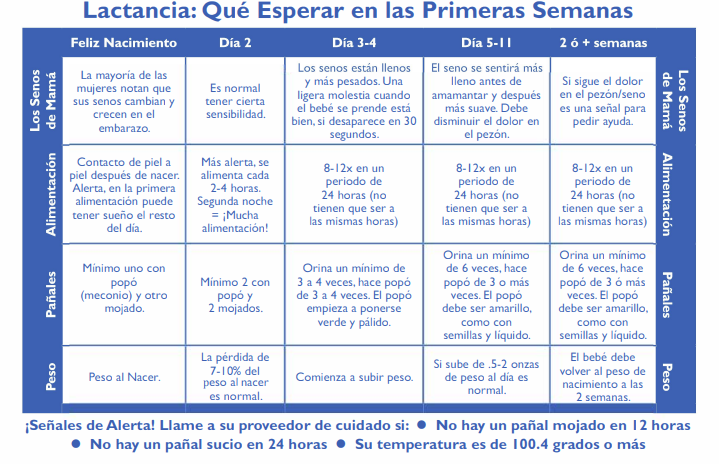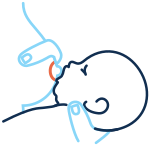Disclaimer [ENGLISH]
Disclaimer : This material is for educational purposes only. You, the reader, as

Piel con Piel
¿Qué es estar piel con piel con tú bebé?
Piel con piel es cuando se pone a bebé sólo en pañal (nada de calcetines, guantes o ropa) en el pecho de la madre. La madre debe de estar sin ropa de la cintura para arriba. Podemos poner una cobija o sábana para taparse.
¡Para los padres también es importante el contacto directo su bebé!
Ventajas del contacto piel con piel
Piel a piel ayuda:
- A regular la temperatura de bebé, la respiración, y los latidos de su corazón
- A que el bebé esté más calmado
- A que mamá y bebé se relajen y tengan tiempo para conocerse
- A que fluya la leche
Puede estar piel con piel mientras amamanta a su bebé, y antes o después de alimentarle. ¡Esta práctica se puede hacer todas las veces que quiera!
Señales de Hambre
¿Cómo saber que mi bebé tiene hambre?
Es mejor observar a bebé y ofrecer el pecho desde las primeras señales, no esperar a que llore.
Señales de que es hora de alimentarle:
- Despierta y empieza a hacer sonidos suaves
- Empieza a lamer sus labios y sacar la lengua
- Busca el pecho (gira la cabeza y abre la boca)
- Se lleva las manos a la boca, se chupa los dedos
Tu bebé no tiene que llorar para avisar que tiene hambre. ¡Llorar es la última señal de hambre!
Un Buen Agarre
¿Cómo lograr un buen agarre?
Encontrar una postura cómoda para amamantar, poner a bebé piel con piel.
Bebé debe de tener el cuerpo hacia mamá (pancita con pancita).
Sostener a bebé de manera que le demos apoyo a su espalda, cabeza y nuca.
Esta publicación fue redactada y aprobada por el subcomité de Lactancia de CPCMG, cuenta con imágenes e información de las páginas web de USDA WIC y AZDHS.
Verificado por SA, NP, IBCLC; EH, CLE – 1/2024.





